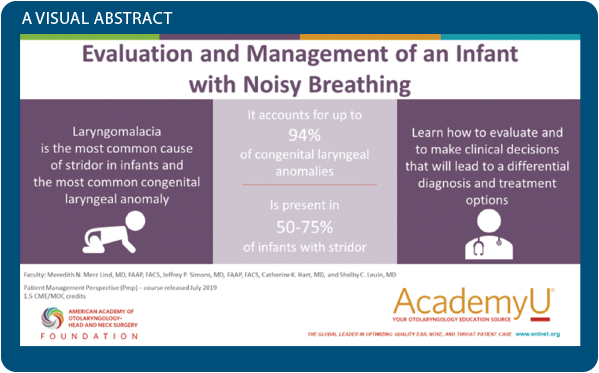1 Visual Abstracts
This is a visual summary of the most salient points of a scientific article, which would typically be found in an article’s abstract in text form. It is distilled into two or three panels of visual information, and features a few high-impact icons. “The goal is to quickly visually encapsulate a paper’s overall message; it’s not meant to be all encompassing,” Dr. Villwock said. “It’s like a movie trailer—it gives some highlights and helps viewers gauge their interest. It’s intended to entice viewers to read the entire paper.”
Explore This Issue
December 2019“It’s much less cognitively demanding to look at a picture and get the gist of an article in a few seconds than read an abstract,” Dr. Villwock said. Visual abstracts are found on journal websites, and researchers might post them on Twitter to promote their papers (See visual abstract, below).

2 Minimalist posters
Like a traditional poster, minimalist posters are set up in a poster hall at a meeting; however, instead of displaying a lot of verbiage viewers must read to discover a poster’s main conclusion, they’re very effective in presenting a core message with a minimal number of words, Dr. Johns said. They don’t contain a lot of figures and images either.
“These posters relay a study’s most important finding up front, but provide limited information beyond that,” Dr. Villwock said. “A poster might lead to a substantial conversation between an attendee and poster presenter.” It’s ideal for anyone who has a project that they can distill in a few main points.
Interested viewers can scan a QR code with their smart device to get more information about a poster. “Minimalist posters have greatly facilitated the ability to view the core message from many more posters during a poster session,” Dr. Johns added. (See image, right).
3 Twitter
This social media platform is accessible on a smartphone or computer. A form of micro-blogging, it allows users to share thoughts and ideas in 280 characters or less. “Re-tweeting” allows users to share a post created by another Twitter user and forward it to their network, increasing its visibility. Anything can be shared in a tweet, including research data, journal articles, or opinions, said Inna Husain, MD, assistant residency professor, associate program director, and section head of laryngology at Rush University in Chicago. “Think of a tweet as a brief snippet of information to gain attention,” Dr. Husain said. Since it is web based, information can spread quite rapidly across the world. A downside is that tweets are not rigorously vetted for their factuality.
Oftentimes, a tweet will link back to a longer article, or a tweeter might post a question to garner feedback from a diverse group. “It exponentially expands our network and our ability to reach people we normally wouldn’t interact with,” Dr. Villwock said.